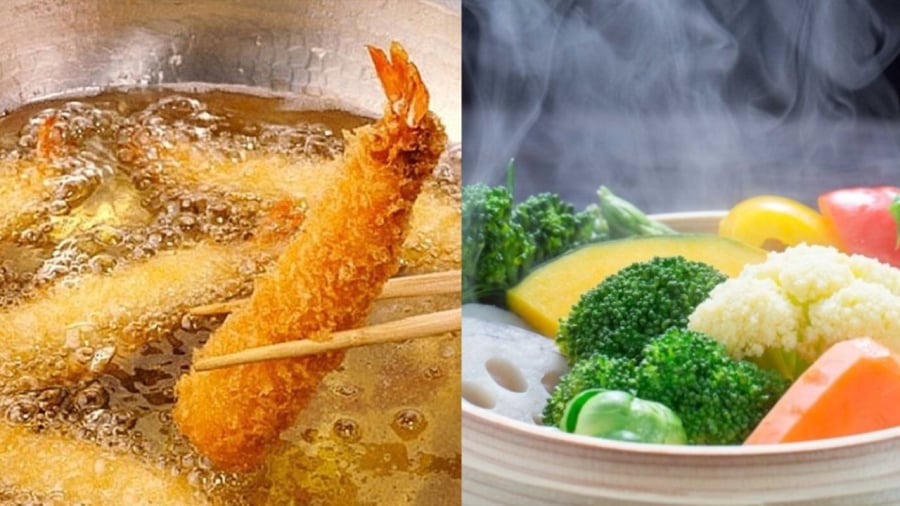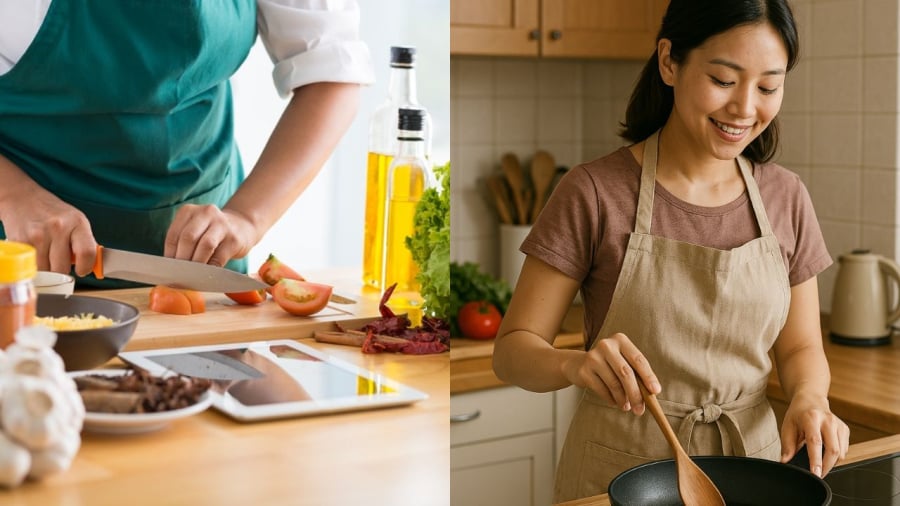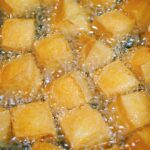Cooking at home is not just about catering to the taste preferences of family members but also ensuring that meals are healthy and safe. Therefore, if you still frequently engage in the following cooking methods, it’s time to make some changes as they can increase the risk of cancer, cardiovascular disease, and other health issues.
1. Deep-frying foods – Tasty but extremely harmful
Deep-frying is a common cooking method, especially popular among children. Crispy, golden fried foods like battered fish, French fries, chicken nuggets, and cheese sticks are often loaded with trans fats and calories. A diet high in fried foods can lead to an increase in “bad” LDL cholesterol and a decrease in “good” HDL cholesterol, resulting in dyslipidemia and a higher risk of:
- Heart attacks
- Strokes
- Coronary heart disease
- Heart failure
According to the Heart journal, consuming just an additional 114g of fried food per week can increase the risk of cardiovascular disease by 28% and heart failure by 37%. Furthermore, trans fats in fried foods can cause inflammation, weaken the immune system, and accelerate aging.

2. Overcooking or consuming raw/undercooked food – Both are detrimental
Overcooking leads to the loss of essential vitamins, especially those from the B and C groups. It can also break down proteins, forming harmful compounds or releasing nitrites, which are linked to cancer. On the other hand, consuming raw or undercooked food increases the risk of parasitic infections, bacterial contamination, and food poisoning. Parasitic infections can lead to brain lesions, liver inflammation, and liver fluke infections.
3. Using the same cutting board and knife for raw and cooked food – Cross-contamination risk
Using the same knife and cutting board for raw and cooked food can lead to cross-contamination, especially with bacteria like E. coli and Salmonella, causing foodborne illnesses. It’s crucial to designate separate cutting boards and knives for raw and cooked foods and maintain proper hygiene by regularly cleaning and drying them after use to prevent mold growth.
4. Heating oil to extremely high temperatures
When oil is heated to the point of smoking, it releases toxic compounds like acrolein, which is irritating and potentially carcinogenic. Reusing oil for frying multiple times is also hazardous as it generates toxic oxidized compounds. These compounds not only impair the flavor of the food but also inflict damage on the liver, kidneys, and immune system.

5. Grilling, broiling, or stir-frying food until it’s charred
Some people enjoy the smoky flavor and aroma of charred food, especially grilled or broiled meat. However, when food, particularly meat, is burnt, it produces HCA and PAHs—carcinogenic compounds that have been flagged by the WHO. Therefore, it’s essential to cook food thoroughly without letting it burn.
6. Reheating food multiple times and improper storage
While reheating leftover food can save money, it also breaks down nutrients and generates toxins. Additionally, storing leftovers in the refrigerator can lead to cross-contamination. Reheating cooked food multiple times can produce harmful nitrites. It’s best to prepare enough food for a single meal to avoid leftovers.
Suggestions for healthier cooking practices
- Prioritize boiling, steaming, and stir-frying with minimal oil.
- Choose healthier oils like olive oil or canola oil.
- Cook just enough food for one meal and avoid reheating leftovers repeatedly.
- Organize your refrigerator with separate sections for raw, cooked, and perishable foods.
Conclusion: Changing cooking habits might take some time and effort, but it’s worth it to enhance the flavor of your meals and safeguard your family’s health. By adopting healthier cooking methods, you can reduce the risk of obesity, cardiovascular disease, and cancer. Start by taking small steps, such as reducing fried foods, avoiding raw or undercooked meals, and not reusing old cooking oil. Gradually, you can incorporate more healthy cooking practices into your family’s daily routine.
The Ultimate Guide to Frying Cha La Lot: How to Keep the Green Color and Enhance the Meat’s Flavor
“Cha la lot, or grilled minced pork wrapped in betel leaves, is a tantalizing Vietnamese delicacy. The unique flavor and aroma of this dish lie in the perfect blend of spices and herbs and the distinct fragrance of the betel leaves. However, achieving that mouthwatering, perfectly green-colored cha la lot can be a challenge for home cooks. With the right techniques and a bit of practice, you can master the art of creating this delicious appetizer that will impress your family and friends.”
The Ultimate Fish Fry: Achieve Crispy, Evenly Cooked Perfection with This Simple Trick
For many, frying fish is a daunting task, often resulting in a sticky mess, with the fish falling apart, unevenly cooked, or smelling and tasting unpleasant. But fear not, with a simple, inexpensive ingredient and a few expert tips, you can fry fish to perfection, achieving a crisp, golden exterior with a tender, flaky interior, and no unpleasant odors.






































